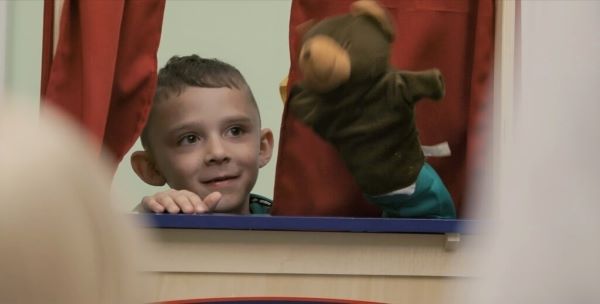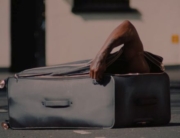
When Sesame Street actor Will Lee, who played the beloved Mr. Hooper, died in 1982, the show incorporated that loss into one of its most iconic episodes, “Farewell, Mr. Hooper,” which used his passing to talk openly to kids about death. It’s a concept Big Bird can’t seem to grasp at first, only rationalizing Hooper’s death as something that happens “just because.” Beautiful Something Left Behind, a thoughtful and illuminating documentary about a nonprofit group designed to help children deal with the loss and absence of loved ones, reminded me a lot of that episode. If the film sounds heartbreaking, wait until you actually watch it.
Director Katrine Philp offers a fly-on-the-wall look into Good Grief, an organization located in Morristown, New Jersey, where boys and girls receive peer support and group activities to comprehend grief at such a young age. These activities wouldn’t feel out of place in an elementary school setting, from sharing personal information while holding a talking stick to conveying negative emotions through puppet shows or comparing them to colors.
Six kids are the film’s focus, including two pairs of siblings—Nolan and Nora, Nicky and Kimmy—along with Mikayla and Peter. All of them have lost parents, predominantly fathers, to various tragedies including medical conditions and alcohol poisoning, with each getting a brief moment to explain to the camera what the death feels like. Peter is probably the most devastating case, having lost his dad to “bad medication” and his mom to a car accident. His memories of his parents stay with him in even the most innocuous ways. At one point, Peter finds a tire piece found near his mom’s memorial and genuinely asks if it belonged to her car. He then decides to hold on to it in case. That moment is only one of many heartbreaking rationalizations.
What’s notable about these interactions is how they make us understand the sensation of grief and death as theoretically perceived by children. When Nicky and Kimmy talk about their dad’s death, the memory seems more focused on how a hospital nurse gave them candy beforehand compared to the pedestrian nature of his passing. Mikayla interprets things in more fantastical terms, describing heaven as an invisible pink planet where the deceased can party before becoming angels, and questions her mom in a cemetery on how the dead can hear you pray.
The tactics for helping the kids achieve closure feel like they were made to appeal to a child’s imagination, whether it’s Peter releasing balloons that he hopes will reach his mom in heaven or Nolan writing a message to his dad on a sky lantern. Beautiful Something Left Behind isn’t sugarcoating the tragedies of loss. Instead, it provides a rather insightful look at how these coping strategies help to process things beyond our realm of understanding.
Though the six kids are Philp’s focus, she also occasionally emphasizes the compassion and temperament of Good Grief’s faculty toward every child it takes in. It’s here that we get a better understanding of this coping environment, one where kids are encouraged to share negative feelings and discuss what it means to grapple with them. Being children, sometimes those emotions become too much and require a trip to the volcano room to vent some frustration, but for the most part it’s like therapy, allowing them to openly discuss difficult subjects without fear or embarrassment.
It’s the juxtaposition between innocence and melancholy that makes Beautiful Something Left Behind so captivating. Philp doesn’t do anything fancy with her camera, but she knows how to linger on the quiet emotional moments and let interactions between Good Grief counselors, the kids, and their parents play out. After all, these sessions are for them what certain Sesame Street and Mister Rogers’ Neighborhood episodes were for older generations: a way to teach kids mature topics without ever talking down to them. They just happen to find more creative ways of understanding death than “just because.”






Leave A Comment